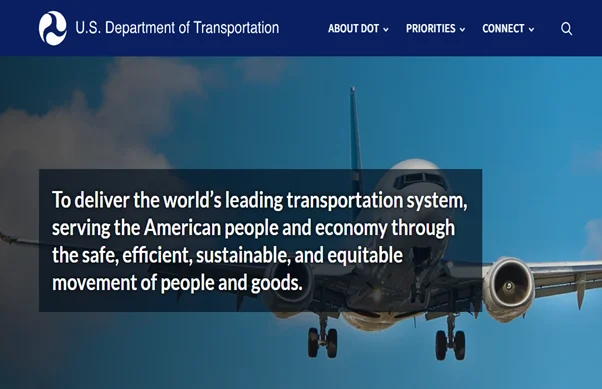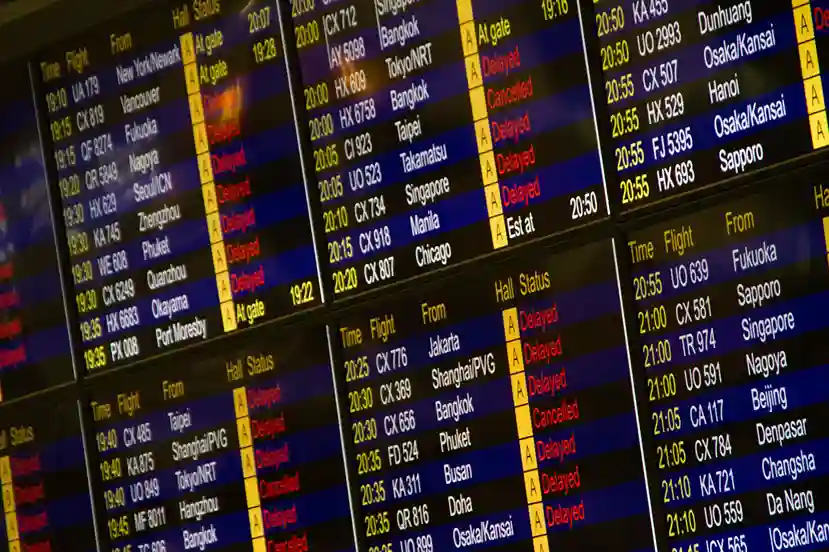How Winter Storms Disrupt U.S. Travel: What Travelers Need to Know About Cancellations, Delays, and Airline Policies in 2025

Each year, winter storms wreak havoc on U.S. travel, causing significant disruptions for air passengers, road travelers, and rail commuters. As winter storms grow more unpredictable, travelers face flight cancellations, extended delays, and logistical headaches that ripple across the country. In 2025, these disruptions remain a serious concern, not only during peak holiday periods but throughout the winter season.
This guide provides a detailed look at how severe winter weather continues to impact travel in the United States, the policies airlines have in place to help affected passengers, and what travelers can do to minimize stress during these chaotic situations. From the latest updates on airline waivers to understanding government regulations, this article offers actionable information and practical advice for anyone traveling during the winter months.
Winter Storm Disruptions: A Recurring Challenge for U.S. Travel
Severe winter weather is one of the leading causes of travel disruption in the United States. While technology has advanced, and forecasting tools have improved, the sheer force of nature can still bring even the most sophisticated travel networks to a standstill. Icy runways, heavy snowfall, high winds, and freezing rain make travel dangerous and often impossible.
During the winter of 2024–2025, thousands of flights across the U.S. were canceled or delayed, highlighting just how vulnerable the air travel system remains to seasonal weather challenges. In early January, heavy snowstorms sweeping across the Midwest and Northeast grounded flights at major hubs like Chicago O’Hare, Denver International, and New York's JFK Airport. Airlines like Southwest, American Airlines, Delta, United, and Frontier issued travel waivers, allowing passengers to change their flights without penalty. Still, these measures could not prevent widespread inconvenience for travelers.
According to FlightAware, a leading flight-tracking platform, over 1,700 flights were canceled and more than 3,500 delayed in just a single day during one storm cycle in January. These figures demonstrate how quickly a winter storm can escalate into a nationwide travel crisis.
Why Winter Weather Causes Travel Chaos
Winter weather affects travel in several direct and indirect ways, disrupting not only flights but also ground transportation networks, hotel availability, and even supply chains.
1. Flight Disruptions
Flights are often the first victims of winter storms. Here’s why:
- Snow and Ice on Runways: Airports must close runways for plowing and de-icing, halting takeoffs and landings.
- Aircraft De-Icing Delays: Planes require de-icing treatments before departure in freezing conditions, which causes backups.
- Visibility Issues: Snowstorms and freezing fog reduce visibility, grounding flights for safety reasons.
- Ripple Effect: A single hub airport closure can cause delays and cancellations across the country due to interconnected schedules.
2. Road and Rail Travel
Heavy snowfall, icy highways, and reduced visibility also affect ground transportation:
- Road Closures: Interstates and major highways often close during severe storms.
- Rail Service Delays: Snow and ice on tracks or power issues can delay or cancel Amtrak and commuter rail services.
- Hazardous Driving Conditions: Accidents and breakdowns increase during winter storms, leading to congestion and further delays.

Airlines’ Response: Waivers, Policies, and Customer Protections
When severe weather hits, U.S. airlines typically issue travel waivers, allowing affected passengers to change or cancel their flights without extra fees. While these policies vary between carriers, they often include similar flexibility during major storms.
Airline Waivers: What Travelers Should Know
During the 2025 winter storm disruptions, these were some common waiver policies from major airlines:
- American Airlines: Allowed free changes for flights between January 4–6 at affected airports.
- Delta Air Lines: Waived change fees for flights scheduled on January 6.
- United Airlines: Offered flexibility for passengers traveling January 5–6 without extra fees.
- Southwest Airlines: Provided waivers for customers flying within affected dates and regions.
- Alaska Airlines: Issued specific waivers for certain airports.
- Frontier Airlines: Allowed penalty-free changes for flights on January 5–6.
- JetBlue: Extended waivers for flights during peak storm periods.
These policies generally allow passengers to rebook for a later date without paying additional fees, though some restrictions apply regarding origin and destination cities.
How to Use Airline Waivers Effectively
- Check your airline’s website frequently for updated waiver policies.
- Rebook early to secure preferred times and availability.
- Use the airline’s app for faster rebooking rather than waiting on hold.
Government Regulations: How the DOT Protects Travelers
The U.S. Department of Transportation (DOT) plays a crucial role in protecting airline passengers, especially during widespread disruptions. In 2024, the DOT implemented new regulations to improve transparency and accountability for airlines regarding delays, cancellations, and refunds.
The DOT’s Cancellation and Delay Dashboard
The DOT’s Airline Cancellation and Delay Dashboard provides a clear outline of what services and compensation passengers can expect from major U.S. airlines during disruptions.
Key features include:
- Refund Policies: Passengers are entitled to a full refund if their flight is canceled or significantly delayed for reasons within the airline’s control.
- Compensation Guidelines: Although cash compensation is rare, airlines must provide meals, lodging, and transportation for overnight delays when the issue is the airline’s fault.
- Defined Delays: A domestic flight delay of over three hours or an international delay of over six hours qualifies as significant.
Understanding Controllable vs. Uncontrollable Delays
The DOT distinguishes between:
- Controllable Delays: Issues like staffing shortages, maintenance, or scheduling problems.
- Uncontrollable Delays: Weather-related delays and air traffic control hold-ups.
Passengers should know that weather-related disruptions typically do not entitle them to compensation beyond rebooking or refunds.
What Travelers Can Do to Protect Themselves During Winter Travel
Travelers can take proactive steps to minimize stress during winter storm disruptions and ensure they are prepared for the unexpected.
1. Plan Ahead
- Book Morning Flights: Morning flights are less likely to be delayed as operations tend to deteriorate later in the day during bad weather.
- Avoid Tight Connections: Build in extra time between connecting flights, especially in storm-prone cities.
- Monitor Weather Early: Keep an eye on forecasts 72 hours before travel.
2. Know Your Rights
- Understand your airline’s policies regarding refunds, rebooking, and accommodations.
- Bookmark the DOT’s Dashboard for quick reference.
3. Pack Essentials in Your Carry-On
- Include medications, chargers, toiletries, and a change of clothes in case you are stranded overnight.
- Bring snacks and water, as food options can become limited during mass cancellations.
4. Stay Connected
- Enroll in airline text alerts and mobile apps for real-time updates.
- Follow airports and airlines on social media for the latest news.
5. Consider Travel Insurance
Comprehensive travel insurance can cover costs related to weather delays, missed connections, and cancellations. Many policies also include reimbursement for meals and lodging.

The Broader Impact of Winter Travel Disruptions
Economic Impact
Flight cancellations and delays during winter storms have a significant economic impact on:
- Airlines: Lost revenue, operational costs, and reputational damage.
- Travelers: Missed events, vacations, or business opportunities.
- Cities: Reduced tourism revenue and increased strain on emergency services.
Environmental Considerations
Ironically, the increased fuel consumption from delays (planes idling, extra de-icing processes) also adds to carbon emissions during these periods.
Industry Trends: How Airlines Are Adapting in 2025
The travel industry continues to adapt to the realities of winter weather disruptions through technology and policy updates:
- AI-Powered Forecasting: Airlines increasingly use AI for better storm prediction and scheduling adjustments.
- Improved Communication Tools: Mobile apps provide real-time rebooking and updates.
- Flexible Booking Policies: Airlines now offer more flexibility year-round, recognizing that weather unpredictability is the new normal.
Travelers benefit from these advancements but should remain proactive in managing their itineraries.
Conclusion: How to Navigate Winter Travel in Today’s Climate
Winter storms are an unavoidable aspect of U.S. travel. While airlines and government agencies have improved policies to assist travelers, disruptions can still lead to significant inconvenience. Being informed, prepared, and flexible remains the best strategy for managing travel during harsh weather.
Whether you are flying for business, leisure, or family commitments, understanding your rights, using technology to your advantage, and planning ahead will help you navigate winter travel with greater confidence.
For the latest information during any future storm or disruption, always consult your airline directly and verify details through official government resources.








